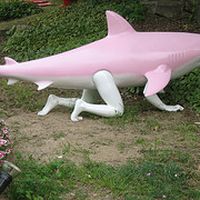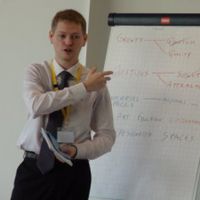Sustainable Creative Cities | role of arts in globalised urban context

[caption id="attachment_6243" align="alignright" width="408" caption="Human Cities Festival, Brussels"]
In October 2010, the Asia-Europe Foundation (ASEF) organised a Connecting Civil Societies of Asia and Europe Conference in Brussels with a series of expert workshops to feed reflection, grassroots experiences and policy recommendations into the ASEM 8 Summit of Heads of State of the Asia-Europe Meeting. The Conference aims to take stock and analyse some of the current trends and issues that define Asia-Europe dialogue, identify the most constructive areas for civil society co-operation, and forecast emerging issues that could have an impact on future ASEM dialogue and directions.
As a contribution to the workshop on Sustainable Creative Cities: the role of the arts in a globalised urban context, this feature article for Culture360.org by Judith Staines outlines the subject and presents good practices from Asia and Europe, highlighting constructive initiatives with artistic rationales that address the topic of sustainable creative cities.
Introduction
As the arts sectors in Asia and Europe are increasingly affected by global cultural and economic developments, interest is growing in exploring the possible roles of arts and cultures as catalysts in contemporary processes of social and cultural transformations. Researchers across Asia and Europe are discussing how to reframe the concept of ‘Creative Cities’ towards the achievement of urban sustainability, as expressed by the notion ‘Sustainable Creative Cities’. Networks of artists engaged with communities and with environmental issues are also growing in both regions.
Contemporary urban contexts across Asia and Europe reveal comparable challenges, such as the proliferation of diffuse cities. In these urban archipelagos, the traditional centre-periphery order is replaced by different combinations of patterns of space, settlement and mobility, between high and low population densities and varying architectural elements. The separation between city, suburbs and countryside is losing its clarity, and with it established perceptions of culture and nature are also shifting. Urban spaces begin to operate at different speeds and unplanned hybrid voids, which do not fit into the limited and linear formal rationality of urban planning, are emerging. As a consequence, lifestyles and modes of living within the urban space are changing, but not always for the better: As much as these evolutions reveal bottom-up creativity in the uses of urban space by inhabitants, they also reinforce unsustainable models, such as consumerism and commuter traffic.
Furthermore, the logic of the “Creative Class” tends to establish real estate speculations, short-sighted competition between cities, as well as social and ecological imbalances on the long term. That unsustainable model is heralded by the urban economist Richard Florida in The Rise of the Creative Class (2002), a book that is still influencing urban policies worldwide. For Florida, social and ecological unsustainability are a fatality in the “spiky world” of creative cities. However, a growing number of artists, concerned local communities and advocates of sustainable cities do not share Florida's fatalism and are exploring alternative developments.
They do not try to oppose or heal problematic urban developments from a top-down or outsider perspective which can ignore the specific context and emerging creativity of each community. Rather, they champion bottom-up, collaborative processes in communities, alongside the transversal and transformative potentials of an ‘artistic mode of knowing’. Unlike the formal rationality of planners, this ‘artistic mode of knowing’ develops intuitive processes of learning, exploring, being open to surprises, and non-linear processes such as learning-while-doing and thinking-while-doing. In other words, it fosters an ability to evolve, rather than enclose ourselves in predefined ideological frames. In the context of complex 'archipelagos' of urban-and-suburban spaces, the evolutionary qualities of such an expanded mode of knowing are especially relevant, not only for a specific category of people labelled as 'artists', but for everyone. And specifically among artists, this transformation is moving them towards inter- and trans-disciplinary collaborations, leaving behind outdated modernist roles assigned to the artist in 'white cube' art institutions.
This introductory text – adapted from the paper prepared by workshop leader Sacha Kagan, in collaboration with ASEF – gives a conceptual outline to the Sustainable Creative Cities theme. Key questions for the workshop include:
- How should arts & culture institutions respond to cultural globalisation within cities?
- What would be appropriate policy frameworks to support these new roles of culture and the arts and create Asian-European synergies to achieve such policy goals?
The planning phase for the workshop on Creative Sustainable Cities involved input from participating experts from Asia and Europe. Working papers to define the parameters for the debate identified main focus points and key values. Issues reviewed in the workshop relate to creative collaborativity, including the development of interdisciplinary networks between artists and communities; the artistic mode of knowing; arts education and arts-in-education; public spaces and the place of the arts; and key civil society values, including human rights, cultural diversity, non-segregation and ecology.
Why Sustainable Creative Cities?
There is currently a convergence of interests in the concept of Sustainable Creative Cities, in transdisciplinary academic networks and more widely among policy makers, culture professionals and civil society. The notion both connects and rejects certain aspects of cultural and creative industries policy and paradigms for sustainable development. The starting point for a Sustainable Creative City is culture and creativity: the policy and practice may incorporate environmental and economic concerns but, essentially, sustainability here calls for a broader interpretation.
Urban Crisis: Culture and the sustainability of cities, the influential 2007 book edited by M. Nadarajah and Ann Tomoko Yamamoto, explores the role of culture in the sustainability of cities, including an 8-point framework of principles, each with culture at its centre. The editors explain “the focus is not exclusively on cultural sustainability but also ecological, economic, and political sustainability, as these aspects are essential to achieving a ‘sustainable cultural city’”. A key challenge is to imagine sustainable urbanisation, one of the major issues being the threat posed by urbanisation to local and distinct cultures: “A loss of distinct urban culture is a loss of ‘place identity’ and ‘people identity’. It confines culture to passivity and adaptation and puts into jeopardy the heart of culture, i.e. creativity and dynamic and active transformation”. Urban Crisis enquires into the nature of urbanisation in general and Asian urbanisation in particular, with four in depth Asian case studies.
Several other recent publications explore policy and present case studies of good practices, intersecting with the rationale of Sustainable Creative Cities:
[caption id="attachment_6241" align="alignright" width="459" caption="Creative Factory, Rotterdam"]
 [/caption]
[/caption]- EUROCITIES (the network of major European cities) paper Unlocking the potential of cultural and creative industries (August 2010) showcases 20 good practices of practical initiatives in European cities. These include:
- Rotterdam Creative Factory hub
- focus on digital technologies for innovation in Bristol
- dialogue between creative representatives and politicians in Copenhagen
- a unique collaboration between an economic development agency and office for cultural affairs in Dortmund
- ECCE INNOVATION project to support the arts and creative sectors in Nantes.
- Agenda 21 for culture is the first worldwide document establishing an undertaking by cities and local governments for cultural development. Publications from Agenda 21 for culture with relevant case studies include:
- Culture and sustainable development: examples of institutional innovation and proposal of a new cultural policy profile (UCLG and Barcelona City Council, September 2009)
- Local policies for cultural diversity (UNESCO, UCLG and Barcelona City Council, September 2006)
- Cities, cultures and developments (UCLG and Barcelona City Council, October 2009).
Agenda 21 for culture’s Culture and sustainable development report sets out clearly the policy dynamic: “This report suggests the role of culture in sustainable development is not only about ‘using artists to raise concern on climate change’ or about ‘building cultural venues that are efficient in the use of natural resources’. It is not only about the income that cultural industries can bring to the economy. It is not about ‘asking more’ to the cultural circles. These are very important questions that need to be addressed, but they do not articulate the core question. The role of culture in sustainable development is mainly about including a cultural perspective in all public policies. It is about guaranteeing that any sustainable development process has a soul. This is the core question.” The report argues for a rethinking of sustainable development policies. Instead of the triangular formula of Economy + Social Inclusion + Environment, a fourth pillar of Culture should be incorporated into a new square model for sustainable development policy with Governance at the heart. Several examples show how culture as the fourth pillar of sustainable development policy is used in many regions of the world.
The arguments for policy initiatives in favour of Sustainable Creative Cities also connect with moves in Europe to rethink cultural policy and the EU Agenda for Culture mainstreaming culture in all relevant policies. The Cultura21 international network of artists, scientists and other cultural actors is engaged in ‘cultures of sustainability’. The British Council Creative Cities project connected cities in East Asia and the UK, with a blog focusing on why inclusive, sustainable and creative cities are beneficial and necessary in a rapidly urbanising region. An interview with Charles Landry on ‘What makes a great creative city?’ explores the qualities of so-called “Yes environments” that build engagement and loyalty to a city.
Good practices – themes and values
A series of good practices from Asia and Europe are presented here which highlight constructive initiatives with artistic rationales that contribute to the development of sustainable creative cities. Reflecting the workshop process, a thematic approach has been adopted, although many examples demonstrate several themes. Some case studies have come from workshop participants and others were identified through wider research. In many cities, the practices and policies described are just a small snapshot of local initiatives to engage the reader’s curiosity and links are provided for further exploration.
EDUCATION
A focal point for the workshop is arts education, art-in-education and the added value of artistic rationality in general education, as areas requiring supportive policies. Creative education is an effective tool in sustaining creative cities.
§ Linz, Austria
In 2009, Linz was European Capital of Culture. A large scale performing arts education project ‘I Like to Move It Move It’ involved over 2,000 pupils and 700 teachers with subsequent interest in adopting the project model in Singapore in 2010. Also attracting wider attention was a focus on the city as an acoustic space. As part of the Hörstadt (Acoustic City) project, there was a campaign against imposed noise (supermarket music etc.) with the launch of the Linz Charter, an attempt to rethink urban development in acoustic terms. This political tool to tackle the problem of imposed noise has since been adopted by several European cities and forms part of the legacy of Linz09. In 2010 the European Commission celebrated 25 years of European Capitals of Culture.
§ Hong Kong, China
[caption id="attachment_6242" align="alignright" width="300" caption="Lee Shau Kee School of Creativity, Hong Kong"]
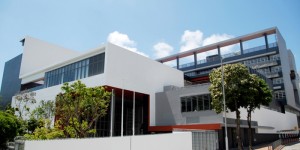 [/caption]
[/caption]Several education projects in Hong Kong demonstrate different elements of sustainability and creativity. The Lee Shau Kee School of Creativity has core values of environmental sustainability. Opened in 2006, it is the first senior secondary school in Hong Kong devoted to creative education, acting as a cross-cultural hub for the sustainable development of creative education. Hong Kong’s Community Museum Project was founded in 2002 and is an example of knowledge transfer in an informal education setting. The Community Museum Project believes that a museum can be a means to represent everyday living and values. An Upcycling Workshop project in 2010 brought 30 emerging designers together to develop prototypes of upcycled designs, using distinctive Hong Kong city waste materials, such as bags made out of recycled taxi seat covers. In 2009, another Community Museum Project Cities of Desire explored alternative strategies of place-making in Hong Kong and Vienna.
COLLABORATIVITY
A focal point for the workshop is the notion of creative collaborativity among emergent networks of artists and ‘non-artists’, a process which values both contemporary creatives and traditional craftspeople. This emphasises key values of bottom-up networking and civil society initiatives, in fostering emerging processes at the local level as well as exchanges between Asia and Europe.
§ Berlin, Germany
Positioned as a creative city with a Creative City Berlin web portal to encourage and support inward cultural mobility and knowledge sharing, Berlin has long been an attractive destination for artists and creative professionals from around the world. This makes it an important hub/incubator for creative initiatives, some interconnected, many independent. ufaFabrik Berlin is an international centre for culture and ecology with a diverse ongoing programme including artist residencies, performances and opportunities for civic engagement, combining international and local cultures. ufaFabrik is the European Hub for freeDimensional, a global network that supports art spaces hosting activism and strengthening community engagement. Uberlebenskunst is a two-year programme entitled THE ART OF SURVIVAL, led by the House of World Cultures (HkW). Together with partners from all over the world, HkW have set themselves the goal of developing and testing new approaches to the art of survival in the 21st century. An international call resulted in 14 selected projects, all firmly anchored in the city and designed to engage with Berliners.
§ Jakarta, Indonesia & Angono, Philippines
While they are unique cities with distinctive contexts and challenges, Jakarta and Angono both offer examples of creative collaborativity between artists and communities in working towards a sustainable creative city. In Jakarta, Rujak is dedicated to building a better, sustainable Jakarta and invites everyone to share ideas, actions, questions, know-how, challenges and solutions, in the belief that individual and collective action can do a lot to change the metropolis. In Angono, many local artists have contributed to the town’s sense of place. Engagement in the town’s cultural policy development has been more challenging, due to widespread suspicion of politicians’ motivations. Now younger artists in Angono through the NEO-ANGONO artists collective are trying to break this barrier and find creative ways to contribute to cultural policy decision-making.
PUBLIC SPACE
A focal point for the workshop is to address specific challenges, including opening up public spaces in Asia for arts and cultures (beyond institutionalised art spaces and the commercial gallery/performing arts spaces), inviting artists and communities to experiment, analyse and question/criticise social values in the public spaces; recognising and supporting the potential roles of the arts and culture as catalysts in bottom-up responses to contemporary challenges of globalisation. This highlights a key value in the balance between social inclusion and interculturality with room for tolerated discussion in the public space.
§ Anyang, Korea
Anyang is an ultra-modern, planned satellite city of Seoul, Korea. Anyang Art City 21 was launched in 2002, as a systematic urban planning project, the first of its kind in Korea, intended to turn Anyang into “a city of beauty and art” and with art and architecture to refine the cityscape and innovate its image. Initiated in 2005, the Anyang Public Art Project began with commissioned public artworks and has now evolved into a radical investigation into the nature of cities and public space. Anyang Public Art Project 2010 (APAP 2010) is an enquiry about the idea, belief and structure of NEW COMMUNITY that could sustain and advance within the transformative and ephemeral conditions of contemporary cities. APAP 2010 is grounded in two principal theories of urban metaphysics: first, in Urban Ecology, the idea that human-made ecology of the artificial is a reflection of the ecology of nature; second, in Public Culture, a practice of art as a multi-disciplinary, research-based and process-oriented collaboration with the public and its various cultures.
§ Lille, France
[caption id="attachment_6245" align="alignright" width="300" caption="Lille 2004 European Capital of Culture"]
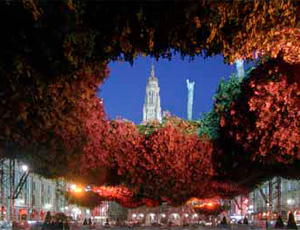 [/caption]
[/caption]An example of creating a sustainable legacy from an intense cultural programme, Lille in northern France was European Capital of Culture in 2004. Lille2004 transformed the city’s cultural infrastructure, generated collective memories through many large scale public projects and brought about a fundamental change in the image of Lille and the surrounding region. To take advantage of this creative energy, Lille3000 was created as an ongoing programme to continue to engage residents and visitors. Lille3000 examines a wide range of themes: the economy and new technologies, the art of city living and building the city of tomorrow, spirituality, and more generally issues of society and civilisation. Lille has adopted Agenda 21 for Culture and is vice-president of the UCLG Committee on Culture which manages it.
COMMUNITY ENGAGEMENT
A focal point for the workshop is active citizenship with the involvement of artists working as catalysts in communities, as well as the engagement of civil society. This reflects key values of the balance between community and individuality in advancing human rights and freedoms of expression; also, a fluid exchange between intellectual cultures through ‘research and experimentation’ and popular cultures of local, regional and transversal-global communities.
§ Penang, Malaysia
Selected as a case study for the Urban Crisis book, M. Nadarajah describes Penang as a case of multicultural reality and sustainable localism. George Town, the capital of Penang state, is a thriving city with a distinctive post-colonial urban history, a living heritage city with one of the largest surviving ensembles of pre-war buildings in South East Asia. Heritage is highly contested in Penang, with severe development pressures on the central George Town Historic Enclave and other ‘vernacular buildings’. The Sustainable Penang Initiative (SPI) was developed in the late 1990s as a long-term project to establish sustainable development indicators in order to monitor development in Penang, incorporate these into the planning process and educate the public about sustainable development. Community engagement has been central to the SPI, described in its launch as: “After years of top-down development planning driven largely by economic indicators, the government and people of Penang are pioneering a new community-based indicators project. The Sustainable Penang Initiative is helping to make holistic, people-centred planning a reality in the state of Penang.”
§ Malmö, Sweden
An active member of Eurocities network, contributing to forums on culture, environment and other policy fields, Malmö is a city in southern Sweden in transition from being an industrial city to a city of knowledge. It has a Sustainable City Development policy and aims to be climate neutral by 2020 and run on 100% renewable energy by 2030. In 2009 it was selected as one of the 13 Fast Cities Most Creative Cities in the World. The city also received the UN-HABITAT Scroll of Honour for its innovative, holistic approach to becoming a 21st century eco-city. One of five European cities in One Planet Mobility project, aiming to reduce car dependency, Malmö has pioneered a Design Exercise where participatory design engages the people on the ground in creating innovation and developing creative scenarios for sustainable mobility.
RE-ORIENTATION OF POLICY – SHIFT IN VALUES
A focal point for the workshop addresses the reorientation of cultural policy support to the arts and culture towards more transversality and greater efforts beyond institutionalised art spaces (especially towards communities). Key values and issues are finding a balance between economic concerns, public service and the ‘third sphere’ (i.e. civil society, foundations and volunteers), also building mixed funding and partnerships between these three elements of the creative economy.
§ Kanazawa, Japan
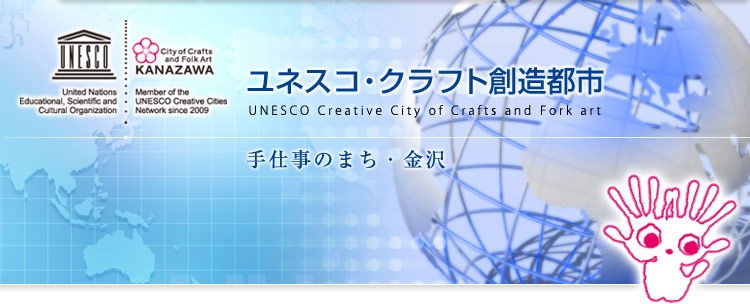 Presented by Masayuki Sasaki (co-organiser of the ASEF workshop) as a case study in Urban Crisis, Kanazawa is a creative and sustainable city, with a high quality of life and a balance between culture and economy. Famous in Japan for its traditional arts and crafts, Kanazawa has entered a new phase in converting disused modern industry spaces into a Citizen’s Art Village, alongside a focus on contemporary art with the opening of the Twenty-First Century Art Museum. Kanazawa’s development as a creative and sustainable city has been driven by the business sector, the citizens and local government. In 2009, facing the challenges posed by the current global financial crisis, the city of Kanazawa implemented the “Monozukuri Ordinance” for the protection and promotion of the traditional arts and crafts. Kanazawa is recognised as a member of the UNESCO Creative Cities Network.
Presented by Masayuki Sasaki (co-organiser of the ASEF workshop) as a case study in Urban Crisis, Kanazawa is a creative and sustainable city, with a high quality of life and a balance between culture and economy. Famous in Japan for its traditional arts and crafts, Kanazawa has entered a new phase in converting disused modern industry spaces into a Citizen’s Art Village, alongside a focus on contemporary art with the opening of the Twenty-First Century Art Museum. Kanazawa’s development as a creative and sustainable city has been driven by the business sector, the citizens and local government. In 2009, facing the challenges posed by the current global financial crisis, the city of Kanazawa implemented the “Monozukuri Ordinance” for the protection and promotion of the traditional arts and crafts. Kanazawa is recognised as a member of the UNESCO Creative Cities Network.§ Union of Baltic Cities, Europe
The Union of Baltic Cities (UBC) presents an interesting example of a strategic approach to creative sustainability by a regional network of cities, located in the Baltic Sea Region of North-East Europe. UBC is a voluntary, proactive network mobilising the shared potential of over 100 member cities for democratic, economic, social, cultural and environmentally sustainable development of the Baltic Sea Region. The UBC Strategy 2010-2015, under the slogan ‘Cities for a Sustainable and Prosperous Baltic Sea Region’ presents an action programme on sustainable development to mobilise member cities and enhance knowledge transfer. As an open house on sustainable urban development, UBC offers scope to profile initiatives for sustainable creative cities, through the Commission on Culture and the overarching policy commitment to sustainability.
Some further resources
Creating Cities: Culture, Space and Sustainability: the 2010 City, Culture and Society Conference was organised in Munich as a collaboration between partners in Germany and Japan. The conference papers offer excellent further reading on the various themes of Creative Sustainable Cities and a conference review by Tom Borrup gives an interesting overview.
Human Cities Festival took place in Brussels, May 2010. “Human Cities” works out the concept of improving the relationship of people towards public space. Complementary targets are to provide empowerment to citizens and motivate public authorities to develop an interdisciplinary creative process for a better sustainable living in today’s cities. The concept was launched in 2006 and partners act as a network of European creative cities.
FoAM is a transdisciplinary laboratory and research group committed to developing a holistic culture, by actively propagating resilient cultural forms. FoAM's members include artists, gardeners, cooks, technologists, designers, writers and scientists from all walks of life. FoAM is currently active in Amsterdam, Brussels and Singapore.
City Mine(d) is an international network of individuals and collectives involved with city and local action. By means of arts projects, campaigns and debate, City Mine(d) puts current themes from neighbourhood to the European level on the public and political agenda and offers a framework in which experience, contacts and information can be shared. It has a flexible network structure with contact hubs in Brussels, Barcelona and London.
Art as Environment: MA course at Manchester Metropolitan University, led by David Haley, and focused on issues such as Ecology, social engagement, climate change, public arts, arts in healthcare, urban design and activist arts.
Sustainable Everyday Project proposes an open web platform to stimulate social conversation on possible sustainable futures. Its publication Creative Communities is about social innovation as a driver for sustainable technological and production innovation.
DESIS is a network of schools of design and other schools, institutions, companies and non-profit organisations interested in promoting and supporting design for social innovation and sustainability.
The Mobile City is a research initiative and international network concerned with the role of digital technology in urban culture and urban design. For other resources on new media inputs and their potential in the development of sustainable creative cities, see also Living Environments and Smart Cities.
Similar content
deadline
31 Mar 2010
from - to
04 Sep 2010 - 30 Oct 2010
deadline
22 Aug 2010
posted on
18 Nov 2010
posted on
27 Aug 2010


